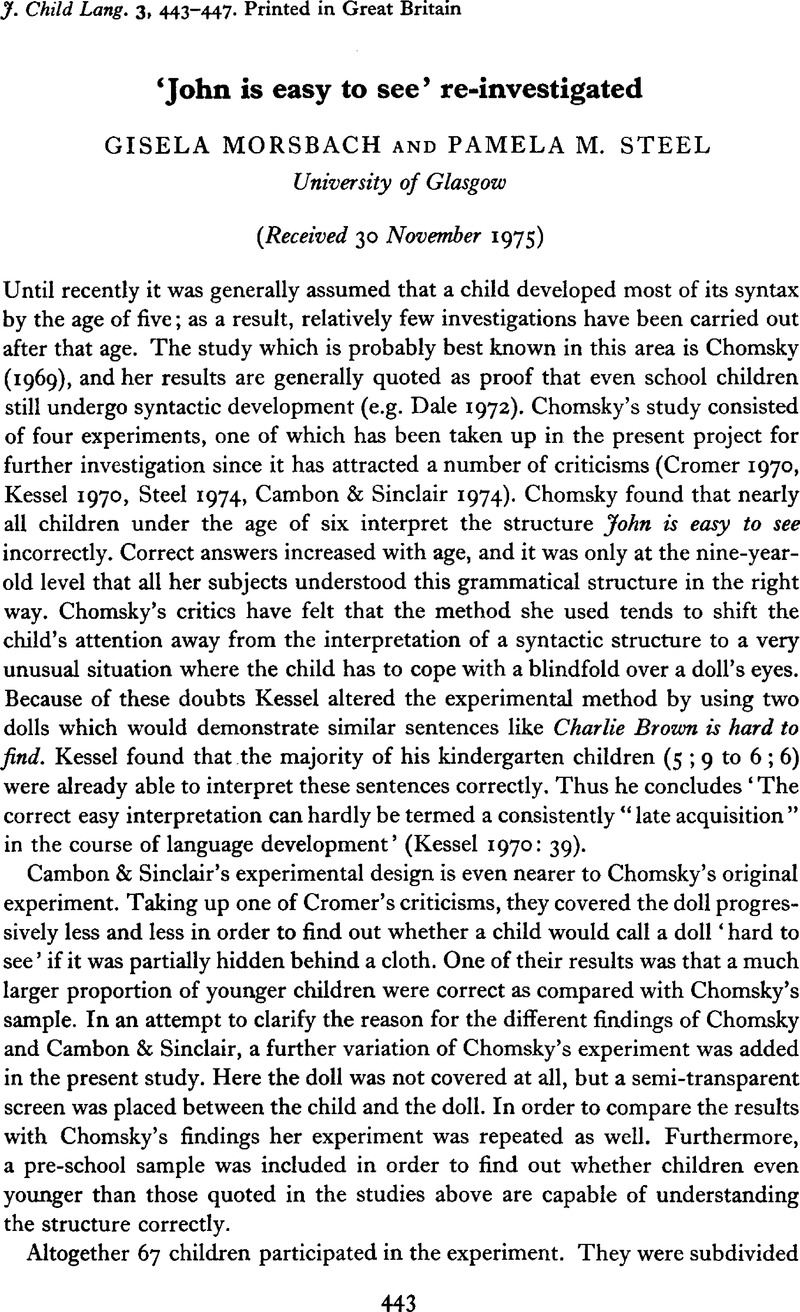Crossref Citations
This article has been cited by the following publications. This list is generated based on data provided by Crossref.
Abbeduto, Leonard
1985.
The Effects of Linguistic Complexity On Children's and Adults' Motor Programming of Speech.
Language and Speech,
Vol. 28,
Issue. 4,
p.
361.
Becker, Misha
2015.
Animacy and the Acquisition ofToughAdjectives.
Language Acquisition,
Vol. 22,
Issue. 1,
p.
68.



